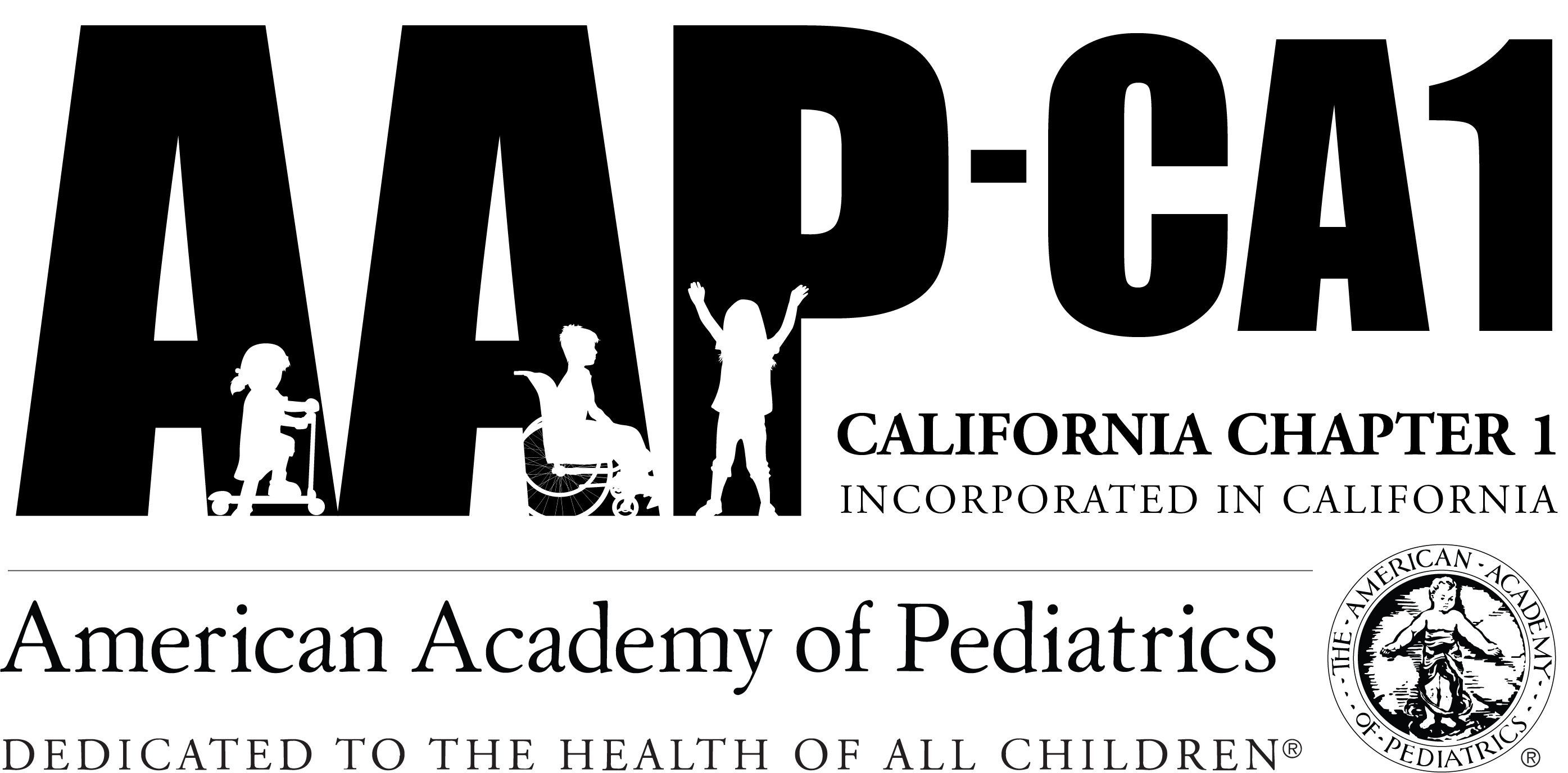Welcome to the final blog post for the CDC Project Firstline/AAP Partnership!
It is an exciting day in your clinic! One of the COVID-19 vaccines (from Pfizer/BioNTech) has just received an emergency use authorization for 12–15 year old kids. You show up to work guessing that this is going to be the number 1 topic for the day.
Picture This:
 Your first patient of the day is Lily. She turned 12 years old a few weeks ago and is coming for an in person well child check. You review her chart and see that her last visit was a well child check with her one year ago (by telehealth per her family’s preference early in the pandemic). At that time, you placed orders for a nurse visit for her routine TDAP, Menactra, and HPV#2. However, the family did not come in for that immunization visit, nor for her flu shot in the fall.
Your first patient of the day is Lily. She turned 12 years old a few weeks ago and is coming for an in person well child check. You review her chart and see that her last visit was a well child check with her one year ago (by telehealth per her family’s preference early in the pandemic). At that time, you placed orders for a nurse visit for her routine TDAP, Menactra, and HPV#2. However, the family did not come in for that immunization visit, nor for her flu shot in the fall.
Lily and her dad come in. She is excited that in-person school has been back in session for the past few months. You plan to discuss the COVID-19 vaccine along with other shots, but her father beats you to it. “We are very excited for Lily to get the COVID-19 vaccine but have some questions first.”
Issues to Consider
“Are you offering the COVID-19 Vaccine in your clinic for teenagers?”
At your clinic you have still been working out the logistics of when you’ll start carrying COVID-19 vaccines for children. While it requires a lot of planning, you believe there would be major benefits to offering the vaccine in your office, including the promotion of the medical home, helping address questions from patients and families, and using your community network, trust, and resource to promote vaccine equity. You have been in contact with AAP California, who has been working hard behind the scenes on planning for the logistics and delivery of vaccine to offices, who have helped guide you to the first step, enrolling your clinic in the state’s COVID-19 Vaccination Program, MyCAVax. You have recommended to your colleagues at other California pediatric practices to contact the the AAP California Executive Director, Karmi Ferguson with questions: karmi.ferguson@aap-ca.org.
You let Lily’s father know you are available to answer questions about the COVID-19 vaccine! And in the meantime, local pharmacies and public health vaccination sites have already started vaccinating children in this age group nearby, and for now, you recommend making her first vaccine appointment with one of them.
“What is the data and testing that lead to the FDA approval in this age group?”
You reassure Lily’s father that the FDA Emergency Use Authorization process is rigorous and that the initial evidence is very promising. Pfizer/BioNTech has provided the FDA with the results from its vaccine trial for 12-to-15-year-olds. With at least 30 days of follow-up after Dose 2 for >98.3% of study participants, none of the 1,131 participants given the vaccine had been diagnosed with a COVID-19 infection, compared to 18 cases of COVID-19 among the 1,129 who received the placebo). Rates of adverse events were low, similar between the vaccine and placebo groups, and like those reported before in older age groups.
Moderna has released similar information about their vaccine in the 12-17 year old age range as well, available here.
“Lily had a fever and a runny nose back in November. We never tested her for COVID-19 at that time. Should she get antibody tested today before she gets vaccinated?”
You review the CDC guidelines that antibody testing is not recommended prior to COVID-19 vaccination, as the vaccine is strongly recommended whether or not a patient has had COVID before. CDC recommendations about vaccinating those with prior or current COVID-19 infections can be found here.
“We want to schedule Lily’s COVID-19 vaccine ASAP at our local immunization site. Does that means we need to postpone her vaccinations today until two weeks after her COVID-19 vaccine course?”
You are very excited to be able to tell Lily’s father she can still get caught up on her 12 year shots today, with no effect on the timing of her COVID-19 vaccine. The CDC updated its recommendations in May 2021 to say COVID-19 vaccines can be given on the same day as other routine vaccines (instead of waiting 14 days as had initially been recommended).
The AAP has endorsed this policy, which is based on safety data gathered to date on giving the COVID-19 vaccine alone, as well as years of experience administering other vaccines together. The decision helps to remove a major obstacle for families and pediatricians trying to catch up on routine adolescent immunizations, which have declined dangerously during the pandemic.
Lily’s dad is grateful to avoid the second appointment, and to get Lily fully protected now.
“Lily’s brother Dylan turned 9 last fall, and missed his check-up and shots then. When do you think that COVID-19 a vaccine will be approved for him?”
You let him know at this moment the timeline is unknown. Most of the major vaccine companies have clinical trials underway for children, some as young as 6 months of age. In the meantime, you point out now is a prime opportunity for him to get the first HPV vaccine dose. You are grateful that your office implemented standing vaccine orders during the pandemic to address the backlog of immunizations that has developed. Tips and templates are available on immunize.org. This way your clinic nurse or MA can schedule and administer needed shots for Dylan and other kids trying to catch up on shots without needing an order from you.
Discussion question: What strategy do you use to address vaccine hesitancy among your families?
Picture This:
 Your next patient is Jason, a 14 year old who is here for follow-up for acne. At the end of the visit, Jason asks “is it safe for kids to get the COVID-19 vaccine?” His father's response: “Jason, we’ve talked about this already” then turns to you: “We aren’t planning on giving this to our kids.”
Your next patient is Jason, a 14 year old who is here for follow-up for acne. At the end of the visit, Jason asks “is it safe for kids to get the COVID-19 vaccine?” His father's response: “Jason, we’ve talked about this already” then turns to you: “We aren’t planning on giving this to our kids.”
Issues to Consider
As a primary care pediatrician, you are familiar with vaccine hesitancy and strategies to address it. And unfortunately, even with the COVID-19 vaccine, vaccine hesitancy in children can be expected. As of early May, polling from the Kaiser family foundation showed that while 30% of parents of children age 12-15 would get their child vaccinated as soon as a vaccine was approved for that age, 26% indicated they would wait to see how it’s working, while 18% would only do it if school required it, and 23% say they will not get their child vaccinated. On a more reassuring note, polling shows considerable interest among teenagers in getting the COVID vaccine, even from the fall before much information was known, as recently published in the Journal of Adolescent Health.
Fortunately, you have a solid repertoire of tactics for convincing parents about vaccination. One paper you have found especially valuable was titled “The Architecture of Provider-Parent Vaccine Discussions at Health Supervision Visits” by Opel et al (Pediatrics, 2013), which discusses the power of “presumptive recommendations for vaccination”. The paper discusses research that parents are more likely to accept shots when pediatricians inform parents that shots were due, rather than a "participatory recommendation" (asking what the parent thought about shots).
The Center to Advance Palliative Care at Mt Sinai has also published a page on helpful strategies to address vaccine hesitancy for COVID, focusing on motivational interviewing techniques, and ways to avoid common pitfalls (for example, criticizing the validity of a parent’s information source).
With Jason’s father, you feel asking some more questions may be helpful to better understand his reluctance to vaccinate his child. You decide to start by asking Jason’s father what his decision around getting his own vaccine had been. He acknowledges that he got vaccinated himself. “For me, the key issue is safety. I’ve heard all about blood clots.”
When issues like safety come up, you like to discuss the Vaccine Adverse Effects Reporting System (VAERS). The trials for vaccine safety are effective at screening for common adverse effects. Sometimes rare adverse effects aren’t seen until the vaccine is widely expanded. VAERS is a giant, real-time reporting system that provides early warnings for any possible concerns, and allows the FDA and CDC to investigate and act as needed. The pause on the J&J vaccine is an example of how seriously vaccine safety is taken. You find it especially important to emphasize to parents that a report to VAERS does not mean that a vaccine caused an adverse event, while meanwhile the short and long-term risks of COVID-19, even in children, are significant.
Discussion question: What similarities and differences have you seen in opinions families have shared about the COVID-19 vaccines vs other vaccines?
Picture This:
 You work in a federally qualified healthcare center and have always been proud of your high rates of vaccination among your diverse patient population. You saw first-hand among your patients and their families how the COVID pandemic exposed and worsened disparities in your community. It's your strong opinion that healthcare providers have a responsibility to speak up to use our response to the pandemic as an opportunity to undo rather than worsen inequities. Vaccination is an opportunity to take this on.
You work in a federally qualified healthcare center and have always been proud of your high rates of vaccination among your diverse patient population. You saw first-hand among your patients and their families how the COVID pandemic exposed and worsened disparities in your community. It's your strong opinion that healthcare providers have a responsibility to speak up to use our response to the pandemic as an opportunity to undo rather than worsen inequities. Vaccination is an opportunity to take this on.
Issues to Consider
To see how your state is doing, you like to reference the Kaiser Family Foundation surveys which track rates of vaccination across states and by race and ethnicity.
The last time you looked at the start of May, California continued to have significant disparities among Latinx people when it came to vaccination. While Latinx people comprise 40% of the state’s population and suffered 63% of the deaths from COVID-19 deaths, they have only made up 26% of those vaccinated in the state.
An op-ed this spring in the New York Times by California pediatrician Dr Rhea Boyd helped you better understand how disparities in vaccination rates within communities of color are driven by access to healthcare, providers, and information.
As knowledge about the vaccine has grown, enthusiasm for vaccination has grown across all demographics. Overall, 8 in 10 of those surveyed state that doctors, nurses, and health care providers are the source they would turn to when deciding to get a COVID-19 vaccine. The rates were even highest among Latinx (81%) and black folks (84%). So, you take confidence that the conversations you are having with your patients are crucial steps to protecting the families you care for.
Join the Conversation
-
- Topic
- Voices
- Posts
- Last Post
-
-
What strategy do you use to address vaccine hesitancy among your families?
Started by: Info Main in: Promoting Vaccination in Our Communities
- 1
- 4
-
4 years, 6 months ago
Graciela Wilcox
-
How do families’ opinions of the COVID-19 vaccine compare to other vaccines?
Started by: Info Main in: Promoting Vaccination in Our Communities
- 1
- 1
- 4 years, 7 months ago
-
What questions do you get from patients/parents on COVID and return to school?
Started by: Info Main in: Protecting People From Pathogens in Schools
- 1
- 3
-
4 years, 7 months ago
Graciela Wilcox
-
How have you seen pandemic related disparities reveal themselves in the patient population you serve?
Started by: Info Main in: Protecting People From Pathogens in Schools
- 1
- 1
- 4 years, 8 months ago
-
How have you approached athletes needing clearance after COVID-19?
Started by: Info Main in: Protecting People From Pathogens in Schools
- 1
- 1
- 4 years, 8 months ago
-
How much success have you had at achieving parity in telehealth billing?
Started by: Info Main in: Protecting People From Pathogens, Part 2
- 1
- 1
- 4 years, 9 months ago
-
What billing strategies have you used to facilitate telehealth in your practice?
Started by: Info Main in: Protecting People From Pathogens, Part 2
- 1
- 1
- 4 years, 9 months ago
-
What unique challenges does your office or patient population present?
Started by: Info Main in: Protecting People From Pathogens
- 1
- 1
- 4 years, 10 months ago
-
How would you approach coding/billing in a “visit” like this?
Started by: Info Main in: Protecting People From Pathogens
- 1
- 1
- 4 years, 10 months ago
-
What strategy do you use to address vaccine hesitancy among your families?
-
